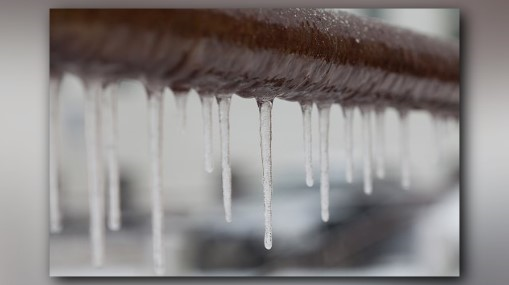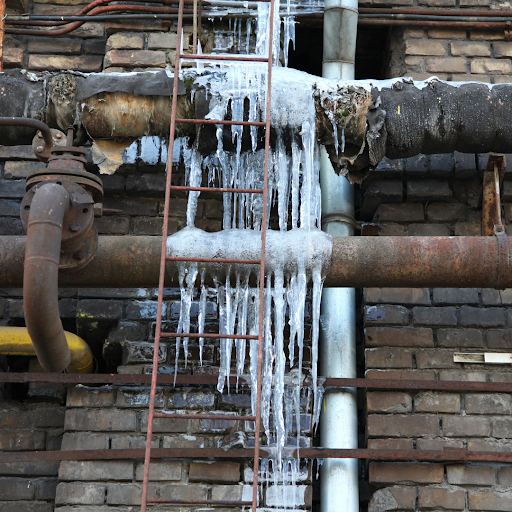Tips to Protect Pipes from Cold Weather: Professional Tips
Tips to Protect Pipes from Cold Weather: Professional Tips
Blog Article
How do you really feel in relation to How to prepare your home plumbing for winter weather?

Winter can wreak havoc on your pipes, especially by freezing pipes. Below's exactly how to prevent it from taking place and what to do if it does.
Introduction
As temperature levels drop, the threat of frozen pipelines boosts, potentially bring about costly fixings and water damage. Understanding just how to prevent frozen pipes is important for property owners in cold environments.
Understanding Frozen Pipes
What triggers pipes to freeze?
Pipelines ice up when revealed to temperature levels below 32 ° F (0 ° C) for expanded durations. As water inside the pipes freezes, it increases, putting pressure on the pipeline wall surfaces and possibly triggering them to rupture.
Dangers and damages
Frozen pipes can result in water system interruptions, residential property damages, and costly repair work. Burst pipelines can flooding homes and cause extensive architectural damage.
Signs of Frozen Pipeline
Identifying icy pipes early can prevent them from breaking.
Exactly how to recognize frozen pipelines
Try to find reduced water circulation from faucets, uncommon odors or sounds from pipes, and noticeable frost on revealed pipes.
Avoidance Tips
Shielding vulnerable pipes
Wrap pipes in insulation sleeves or make use of warm tape to protect them from freezing temperature levels. Concentrate on pipelines in unheated or outside areas of the home.
Home heating strategies
Maintain indoor rooms properly heated up, specifically locations with pipes. Open cupboard doors to allow warm air to circulate around pipelines under sinks.
Protecting Outside Pipes
Garden pipes and exterior taps
Separate and drain pipes yard pipes prior to winter season. Install frost-proof spigots or cover exterior taps with protected caps.
What to Do If Your Pipes Freeze
Immediate actions to take
If you suspect icy pipes, keep faucets available to ease pressure as the ice thaws. Utilize a hairdryer or towels soaked in warm water to thaw pipes gradually.
Long-Term Solutions
Architectural adjustments
Think about rerouting pipelines away from outside walls or unheated locations. Add additional insulation to attics, cellars, and crawl spaces.
Updating insulation
Buy premium insulation for pipelines, attic rooms, and walls. Correct insulation helps preserve regular temperature levels and decreases the risk of icy pipelines.
Final thought
Stopping frozen pipes needs positive measures and quick reactions. By recognizing the causes, indications, and safety nets, home owners can protect their plumbing throughout winter.
5 Ways to Prevent Frozen Pipes
Drain Outdoor Faucets and Disconnect Hoses
First, close the shut-off valve that controls the flow of water in the pipe to your outdoor faucet. Then, head outside to disconnect and drain your hose and open the outdoor faucet to allow the water to completely drain out of the line. Turn off the faucet when done. Finally, head back to the shut-off valve and drain the remaining water inside the pipe into a bucket or container. Additionally, if you have a home irrigation system, you should consider hiring an expert to clear the system of water each year.
Insulate Pipes
One of the best and most cost-effective methods for preventing frozen water pipes is to wrap your pipes with insulation. This is especially important for areas in your home that aren’t exposed to heat, such as an attic. We suggest using foam sleeves, which can typically be found at your local hardware store.
Keep Heat Running at 65
Your pipes are located inside your walls, and the temperature there is much colder than the rest of the house. To prevent your pipes from freezing, The Insurance Information Institute suggests that you keep your home heated to at least 65 degrees, even when traveling. You may want to invest in smart devices that can keep an eye on the temperature in your home while you’re away.
Leave Water Dripping
Moving water — even a small trickle — can prevent ice from forming inside your pipes. When freezing temps are imminent, start a drip of water from all faucets that serve exposed pipes. Leaving a few faucets running will also help relieve pressure inside the pipes and help prevent a rupture if the water inside freezes.
Open Cupboard Doors
Warm your kitchen and bathroom pipes by opening cupboards and vanities. You should also leave your interior doors ajar to help warm air circulate evenly throughout your home.

We hope you liked our post on How to Prevent Your Pipes From Freezing. Thanks for taking a few minutes to browse our posting. Sharing is nice. You just don't know, you may very well be doing someone a favor. Kudos for your time. Kindly visit our site back soon.
Get Offer Report this page